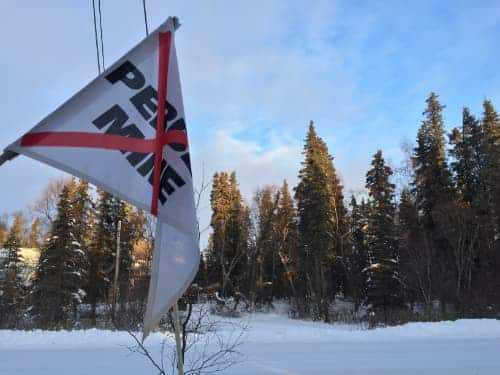Opponents of large-scale metallic sulfide mining within the Bristol Bay Fisheries Refuge have filed an application to put an initiative on a statewide Alaska ballot to require legislative approval for development of such mines.
Lt. Gov. Mead Treadwell has 60 days to decide whether to certify the application or reject it. If approved, backers of the initiative could have until January 2014 to seek the required number of signatures to put the measure on the statewide ballot in the autumn of 2014.
The proposed initiative mirrors Senate Bill 152, introduced last year, which would allow for legislative oversight of the permitting of sulfide mines in the refuge.
If the Legislature were to pass a measure authorizing legislative approval of large-scale mines in the refuge before the autumn of 2014, the ballot measure would not be necessary.
Sponsors of the application for the “Bristol Bay Forever” initiative are Christina Salmon, a shareholder of the Bristol Bay Native Corp.; Mark Niver, a Bristol Bay commercial fishing permit holder and North Slope oilfield worker and John Holman, owner/operator of a commercial fishing lodge in Bristol Bay.
|
|
The application package, with signatures of some 150 Alaskans, including the sponsors, was delivered to Treadwell’s office in Anchorage on Oct. 22. With it was a letter from Timothy McKeever, the sponsoring committee’s attorney, noting that in 1972 the Alaska Legislature acknowledged the statewide economic and cultural importance of the Bristol Bay region by establishing that fisheries reserve, to protect salmon in the region from potential adverse effects of oil and gas development.
That legislation requires that any proposed oil and gas development within the reserve get a legislative finding that such development will not constitute a danger to the fishery. The initiative backers are seeking the same protections from large-scale mining efforts.
A similar initiative effort in 2008, known as the Alaska Clean Water Initiative, failed at the polls, in a highly publicized battle in which opponents and proponents spent over $10 million advertising their point of view.





